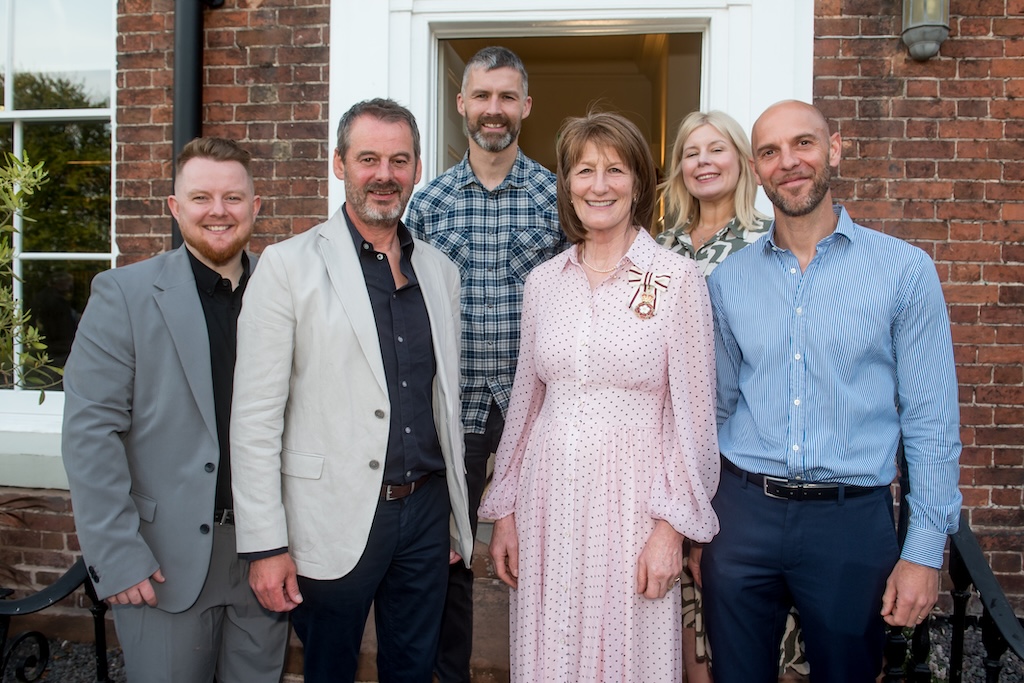Ed is inspired by the flowery words of one of the nation’s best-loved poets, as he gazes on a star of spring.
From Bridgnorth, the eastern skyline is dominated by the Pendlestone Ridge that traces the River Severn for several miles. Spring sunshine and shifting cloud shapes dance across the canopy of oak and Scots pine trees that cling to the sandstone forming the ridge-line. At Winscote Hill near Apley Park, sheer rock plunges to white water. A cottage is just visible on top of the outcrop but the caves at the base of the rockface are a sign of a more ancient habitation. The riverbank here is battle-scarred from winter floods. Limbs have been torn from willow trees, steep slopes scoured away and huge piles of brash left behind by the retreating waters.

The smell of loam hangs at the water’s edge, emanating from the sediment that lies in deep drifts on the bankside. With vegetation mostly dormant, all that is left in this place are the raw elements of earth and water. But change is in the air; Lesser celandine is blooming. Individually the flowers are star-like in appearance. Where they grow en masse, celandines have the ability to illuminate their surroundings with a sparkling yellow aura. One of the first flowers to bloom, they are conduits for the vernal sunshine that surges through forest floors and hedge banks. The name celandine comes from the Greek word for swallow, Chelidoni. Both bird and flower have long been welcomed as harbingers of spring.
Seeking sustenance
A queen buff-tailed bumblebee lands on a celandine flower, seeking sustenance after her long winter slumber. I watch her fly away and patrol low over the riverbank between emerging comfrey leaves. She is seeking an old mouse hole in which to make her nest. Once established the nest can hold up to 600 bees. As spring fades to memory, the bankside nectar palette will change from yellow to baby blue as the comfrey comes into flower.

Whilst on a walk in Glencoyne Park in the Lake District, William Wordsworth famously came upon, ‘A host of golden daffodils’. It could, however, be argued that Wordsworth’s favourite spring flower was the lesser celandine. He requested that the flower was carved onto his gravestone and wrote no less than three poems about the species, including To the Small Celandine;
Long as there are violets,
They will have a place in story:
There is a flower that shall be mine,
‘T is the little Celandine.
The Doctrine of Signatures is a theory devised by ancient herbalists. The central principle is that plants will often resemble human body parts and this can indicate their therapeutic benefits. The underground tuber of the celandine is said to resemble haemorrhoids, hence an infusion of plant extract was prescribed to treat this unpleasant condition. This gave the celandine the folk name of pilewort.
Celandines are true heliophiles. On cloudy days the flowers remain tightly closed. When the sun returns, the flowers seem to track its course across the sky like miniature radar dishes. The number of petals per flower can range from 7 to 12. When fully open, the petals reflex outwards allowing maximum absorption of light.
The butter test
Celandines are members of the buttercup family. Generations of children have held petals against their chin to see if they like butter. The flowers are unusual in their ability to radiate yellow light in this way. Pigments are chemical compounds that are found inside plants. It is the absorption or reflection of different wavelengths of light by these pigments that gives colour. Probably the best-known pigment is chlorophyll which makes plants look green and enables them to photosynthesise. Buttercup and celandine petals contain carotenoid. This pigment absorbs light in the blue and green spectrum and reflects yellow, giving the flowers their colour.
The common blue butterfly has shimmering, iridescent wings that seem to change colour according to the angle that you look at them. This is because of the way that light reflects off the chitin or wing scales. This kind of structural colour is extremely rare in the plant world. However, scientists at Groningen University in the Netherlands have discovered that the glossy sheen of celandine petals is because of a double layer of thin epidermal cells separated by an air gap. These flat cells reflect yellow light with an intensity comparable to glass.

The glossy nature of celandine petals has also been proven to reflect UV light. Because bumblebees and other insects see in the ultra-violet spectrum the flowers are, therefore, highly attractive to them. Both bumblebee and celandine are able to harness the spring sunshine as a catalyst for growth, reproduction and movement. The bumblebee supplements the warmth with kinetic energy, by pumping its wings on cool days. The epidermal cells of the celandine actually concentrate the heat of the sun by reflecting it between the two surfaces. This warms the pollen-producing stamens in the centre of the flower, increasing the likelihood of fertilisation.
Do one thing for wildlife this month
Celandines are ubiquitous in their habits. Tending to favour damp soil, they will happily flower in gardens. I have a small patch blooming at the base of my hedge which I deliberately avoid mowing. The idea of reducing mowing intensity in our gardens is central to the Plantlife campaign ‘No Mow May’. Why not lock away your mower this May and help pollinators like bumblebees and butterflies? At the end of the month, you could then take part in the ‘Every Flower Counts’ survey to record the flowers that are blooming in your garden. More information is available at: https://www.plantlife.org.uk/uk/discover-wild-plants-nature/no-mow-may?msclkid=e6195b4fb31a11ec8160db2112ee824f
In each issue, WW! nature expert and Shropshire Council’s Parks and Greenspace Officer Edward Andrews looks at the changing seasons.
You can follow Ed on Twitter: @shropshirewild






